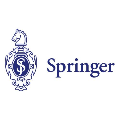Sensing capability is one of the most highlighted new feature of future 6G wireless networks. This paper addresses the sensing potential of Large Intelligent Surfaces (LIS) in an exemplary Industry 4.0 scenario. Besides the attention received by LIS in terms of communication aspects, it can offer a high-resolution rendering of the propagation environment. This is because, in an indoor setting, it can be placed in proximity to the sensed phenomena, while the high resolution is offered by densely spaced tiny antennas deployed over a large area. By treating an LIS as a radio image of the environment relying on the received signal power, we develop techniques to sense the environment, by leveraging the tools of image processing and machine learning. Once a holographic image is obtained, a Denoising Autoencoder (DAE) network can be used for constructing a super-resolution image leading to sensing advantages not available in traditional sensing systems. Also, we derive a statistical test based on the Generalized Likelihood Ratio (GLRT) as a benchmark for the machine learning solution. We test these methods for a scenario where we need to detect whether an industrial robot deviates from a predefined route. The results show that the LIS-based sensing offers high precision and has a high application potential in indoor industrial environments.
翻译:本文论述在模范工业4.0情景下大型智能表面(LIS)的感知潜力。除了LIS在通信方面受到的关注外,它还可以为传播环境提供高分辨率的图像。这是因为,在室内环境中,它可以靠近感测现象,而高分辨率则由部署在大片地区的高度空间小天线提供。通过将LIS作为环境的无线电图像,依靠接收信号力量,我们开发了环境感知技术,利用图像处理和机器学习工具。一旦获得全息图像,Denoising自动电算器(DAE)网络就可以用来构建超分辨率图像,从而发现传统遥感系统所不具备的优势。此外,我们还根据通用类似比(GLRT)作为机器学习解决方案的基准进行统计测试。我们测试了这些方法,以便发现工业机器人是否偏离了预定的高精确度环境。该结果显示了高精确度应用。




